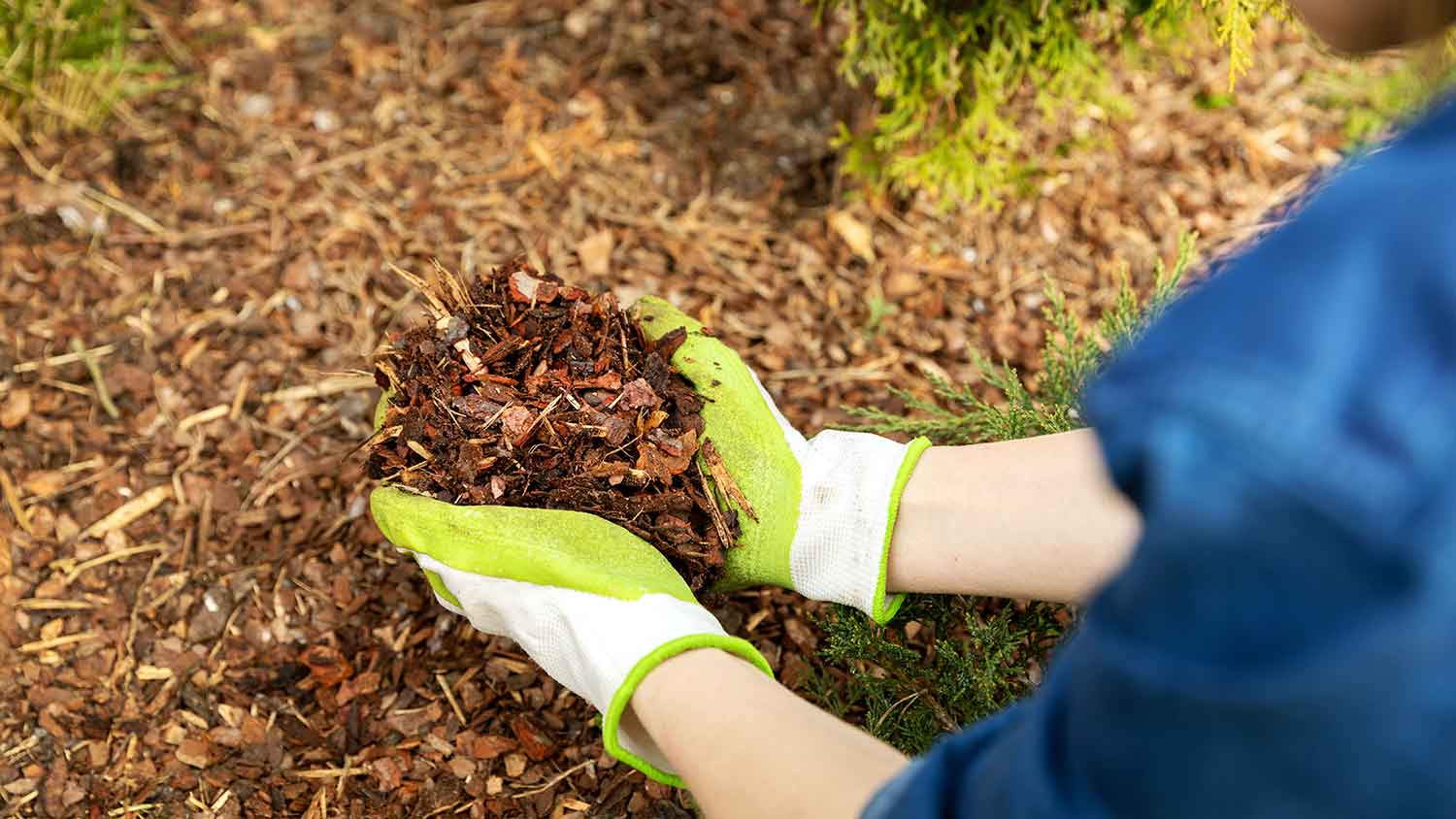
Get clear, up-to-date fill dirt cost info. Learn average prices, cost factors, and tips to save on your next fill dirt project.
You can mulch any time of year, but fall is often the best time for plant health


Mulching in the fall can help maintain healthy soil and plants throughout the harsh winter.
You might save on the cost of mulching if you wait for the fall, which is considered the off-season.
The time of year you mulch depends on your climate, the plants you’re growing, and more, so there’s no single answer for everyone.
Mulch provides numerous benefits for flower beds and boosts your curb appeal at the same time, but choosing when to put down mulch can be trickier than it seems. Should you mulch in the fall before the colder weather comes, or is it better to mulch in the spring, just before your plants start sprouting back to life? In this guide, we’ll discuss the benefits and drawbacks of mulching in the fall to help you decide.
The short answer is, yes, you should almost always mulch in the fall rather than the spring, as you’ll see a few key benefits in most cases. However, that’s not always the case. Generally speaking, mulching in the fall will be more affordable, provide protection for your plants from freezing temperatures, and help retain soil moisture for continued root development through the cold season. This can lead to flourishing plants come springtime, making it the best time to mulch overall.
We’ll discuss the pros and cons of mulching in the fall in the following sections, but if you’re still unsure, you can always ask a landscaper near you if you should call a local mulch delivery company in the fall or wait until spring. They can help you decide what’s best for your specific situation.

There are a few key benefits you’ll enjoy if you mulch in the fall:
Cost savings: Most homeowners mulch in the spring, which means you could enjoy a lower mulch installation cost if you hire a professional to deliver mulch in the off-season.
Protection from freezing temperatures: Mulch helps insulate soil, so there is less chance of extreme temperatures damaging your plants.
Moisture retention: Mulching in the fall will maintain good moisture in your soil through the winter, which can help protect roots and encourage slow growth through the cold season. This does, of course, depend on the type of mulch you use.
Helps boost curb appeal in the winter: When flowers and shrubs die off, lose foliage, and brown in the winter, it’s hard to keep your landscape looking nice. Mulch can add a pop of color to your otherwise drab exterior.
Adds nutrients to the soil: Mulch will slowly add nutrients to your soil through the winter, making it a better place for growing plants and flowers once spring rolls around.
Saves you time in the spring: You won’t save any time overall by mulching in the fall, but you can free up some time in the spring when you might need to focus on other projects, like spring clean-ups and power washing.
Of course, there are some downsides to mulching in the fall that you should consider, as well.
It may require pre-emptive weeding. If you wait for the spring to mulch, most of the weeds will be dead and gone, and you can mulch right over them. Mulching in the fall means you’ll likely have to take the time to weed before laying down the covering.
It can slow down soil warming in the spring. Mulch insulates the soil and keeps it warmer in the winter, but it can also slow down the natural warming in the spring and summer. You might have to remove the mulch in the spring if you plan on taking full advantage of the warmer weather.
Mulching in the fall is straightforward, but there are a few mulching tips that will help you get the most out of the application and maximize plant and garden health.
Don’t over-mulch. Aim for between 1 and 4 inches of mulch. Too much will trap too much moisture and can lead to root rot. Make sure you account for this depth when deciding how much mulch you need.
Remove weeds first. Always weed before mulching in the fall. Leaving established weeds will just allow them to grow right through the mulch come springtime.
Fertilize first. Consider applying fertilizer before mulching to lock in the nutrients and prep your soil for spring.
Use leaves or pine needles. If you have leaves or pine needles lying around from the fall, consider using those to save money over hiring someone to deliver mulch, as well as reduce yard clean-up time.
Too much mulch can hinder plant growth as it blocks the nutrients, sunlight, and water it needs to grow. One to four inches of mulch is your average mulch depth for most plants.
From average costs to expert advice, get all the answers you need to get your job done.

Get clear, up-to-date fill dirt cost info. Learn average prices, cost factors, and tips to save on your next fill dirt project.

Find out how much a soil test costs and what you get for your money with our expert guide. Know what to budget for different types of soil tests.

Find out the average mulch delivery and installation cost, plus key factors that impact your price. Learn how to budget, compare options, and save on your landscaping project.

Organic mulch improves soil quality, holds in moisture, and helps plants thrive, but how does it work? Learn how mulch can improve your yard.

Knowing who to hire for mulch installation can seem tricky at first. Read this guide to figure out which companies are your best options for a mulching project.

This calculator helps you estimate how much topsoil you need, so you can purchase materials and budget for your project, whether it’s for your lawn or garden.